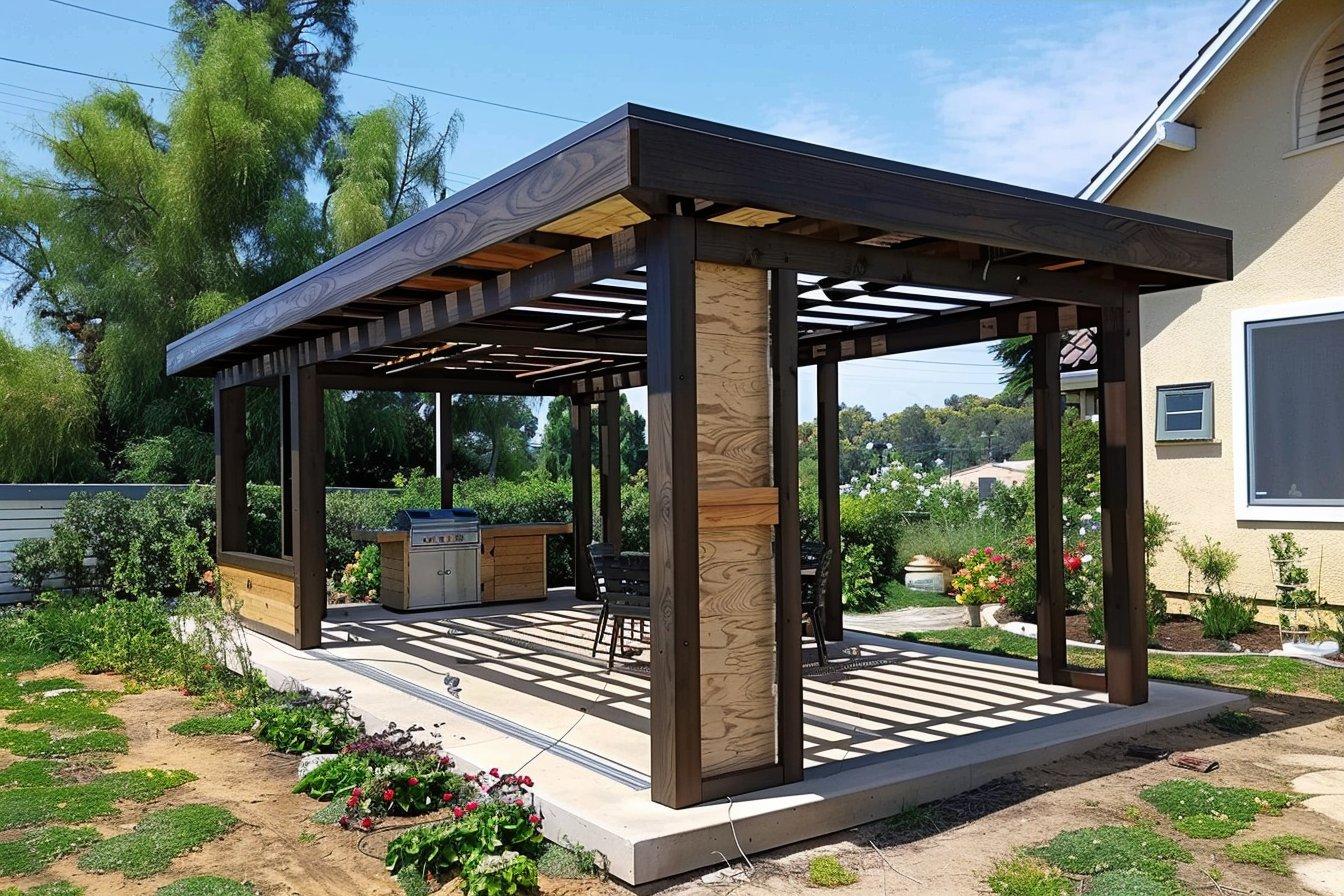Polycarbonate Sheets for Pergola Roofs: A Comprehensive Guide
Polycarbonate sheets have become increasingly popular for pergola roofs, offering a blend of durability, light transmission, and aesthetic appeal. This article explores the key aspects of using polycarbonate sheets for pergola roofing, from types of panels to installation considerations, helping you make an informed decision for your outdoor space.

What are the benefits of using polycarbonate sheets for pergolas?
Polycarbonate sheets offer several advantages for pergola roofs. They are lightweight yet highly durable, resistant to impact and weather extremes. These sheets allow natural light to pass through while blocking harmful UV rays, creating a comfortable environment beneath. Polycarbonate is also versatile in design, available in various colors and textures to complement different architectural styles. Additionally, these sheets are easy to work with during installation, making them a practical choice for both DIY enthusiasts and professional contractors.
What types of polycarbonate panels are commonly used for pergolas?
Several types of polycarbonate panels are suitable for pergola roofing:
-
Solid Polycarbonate Sheets: These offer the highest clarity and are ideal for maximum light transmission.
-
Corrugated Polycarbonate Panels: These have a wavy profile that adds strength and helps with water runoff.
-
Multiwall Polycarbonate Sheets: Featuring multiple layers with air chambers, these provide better insulation and are available in various thicknesses.
-
Twinwall Polycarbonate Panels: A popular choice, these double-layered sheets offer a good balance of strength and light diffusion.
Each type has its own set of characteristics, and the choice often depends on specific project requirements, climate conditions, and personal preferences.
How do polycarbonate sheets compare to other pergola cover options?
Compared to other pergola cover materials, polycarbonate sheets offer unique advantages:
-
Glass: While glass provides clarity, polycarbonate is lighter, more impact-resistant, and easier to install.
-
Wood: Polycarbonate allows more light and requires less maintenance than wooden roofing.
-
Metal: Polycarbonate is lighter and allows natural light, unlike metal roofing which can be opaque and heavy.
-
Fabric: Polycarbonate offers better weather protection and durability compared to fabric covers.
However, polycarbonate may not match the traditional aesthetic of some materials and can be more expensive than basic options like fabric or certain types of metal roofing.
What are the basic installation considerations for polycarbonate pergola roofing?
Installing polycarbonate sheets for a pergola roof requires careful planning and execution:
-
Structure Support: Ensure the pergola frame can support the weight of the polycarbonate sheets and potential snow loads.
-
Slope: A minimum slope of 5 degrees is recommended for proper water drainage.
-
Expansion Gap: Allow for thermal expansion by leaving small gaps between sheets and around the edges.
-
Fixing Points: Use appropriate fixings and washers designed for polycarbonate to prevent damage and leaks.
-
Sealing: Apply compatible sealants to prevent water ingress at joints and edges.
-
Cutting: Use fine-toothed saws or specialized cutting tools to avoid chipping or cracking the sheets.
Proper installation is crucial for the longevity and performance of the polycarbonate roofing, so consider professional help if you’re unsure about the process.
What maintenance is required for polycarbonate pergola roofs?
Polycarbonate sheets are relatively low-maintenance, but some care is needed to keep them in optimal condition:
-
Regular Cleaning: Wash the sheets with mild soap and water to remove dirt and debris.
-
Avoid Abrasives: Use soft cloths or sponges to prevent scratching the surface.
-
Check Seals: Periodically inspect and replace sealants if they show signs of degradation.
-
Clear Debris: Remove leaves and other debris to prevent staining and ensure proper drainage.
-
Inspect Fixings: Check and tighten any loose screws or fixings annually.
With proper care, polycarbonate pergola roofs can maintain their appearance and functionality for many years.
What are the cost considerations for polycarbonate pergola roofing?
The cost of polycarbonate sheets for pergola roofing can vary significantly based on type, quality, and size. Here’s a general pricing guide:
| Type of Polycarbonate Sheet | Average Cost per Square Foot | Features |
|---|---|---|
| Solid Polycarbonate | $2 - $5 | High clarity, UV protection |
| Corrugated Polycarbonate | $1.50 - $4 | Good strength, economical |
| Multiwall Polycarbonate | $3 - $7 | Better insulation, various thicknesses |
| Twinwall Polycarbonate | $2.50 - $6 | Balance of strength and light diffusion |
Prices, rates, or cost estimates mentioned in this article are based on the latest available information but may change over time. Independent research is advised before making financial decisions.
In addition to material costs, factor in expenses for support structures, fixings, sealants, and potentially professional installation. While the initial investment may be higher than some alternatives, the durability and low maintenance of polycarbonate sheets can offer long-term value for your pergola project.
Polycarbonate sheets provide a versatile and practical solution for pergola roofing. By understanding the types available, installation requirements, and maintenance needs, you can make an informed decision on whether this material is the right choice for your outdoor space. Always consult with local experts and adhere to building codes when planning your pergola roofing project.




